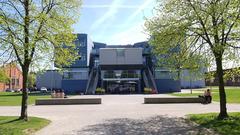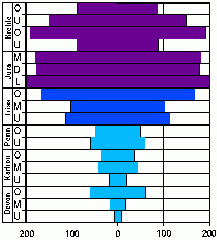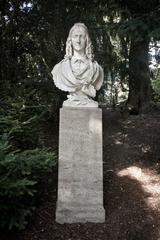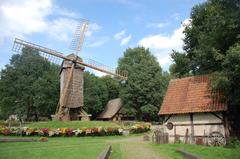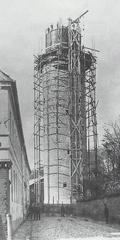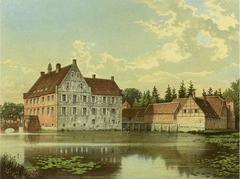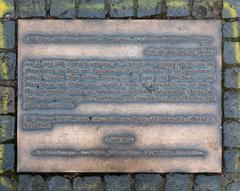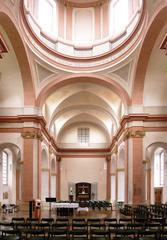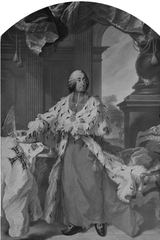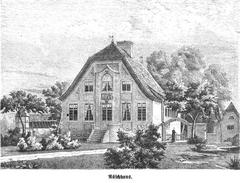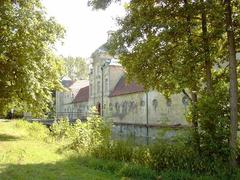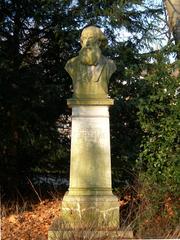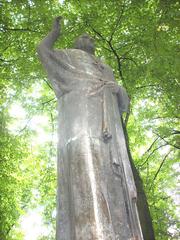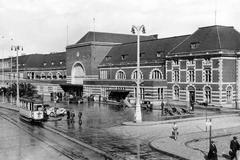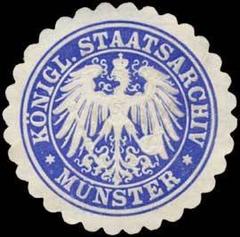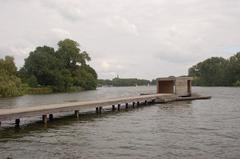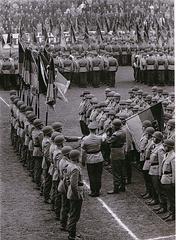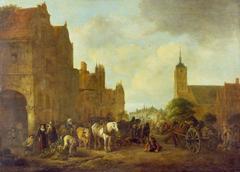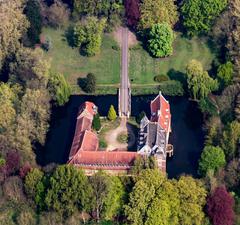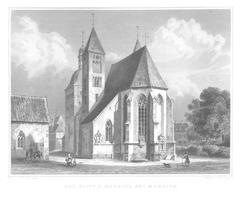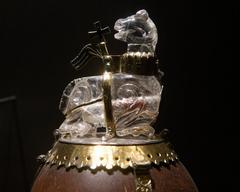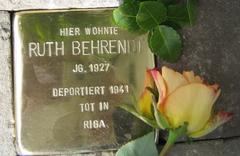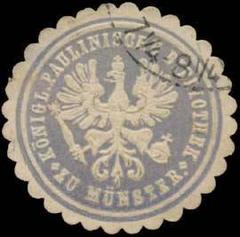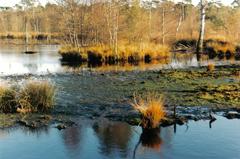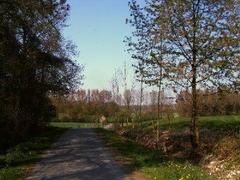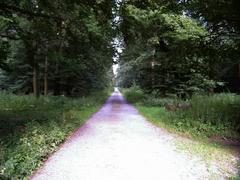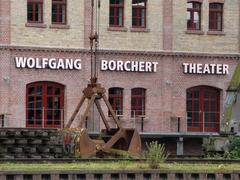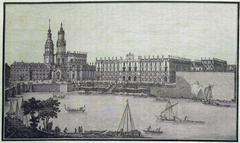
Zentralfriedhof Münster: Visiting Hours, Tickets, and Guide to Münster Historical Sites
Date: 04/07/2025
Introduction
Zentralfriedhof Münster, the Central Cemetery of Münster, is one of the city’s most important historical and cultural landmarks. Established in the late 19th century, this expansive cemetery blends tranquil green spaces with rich architectural, artistic, and social heritage. Its serene avenues, neo-Gothic features, and notable graves make it both a memorial and a unique urban green space. This detailed guide covers everything you need to know about visiting Zentralfriedhof Münster, including opening hours, ticket information, accessibility, historical context, and tips for exploring Münster’s broader cultural landscape.
For official updates, events, and resources, visit the Zentralfriedhof Münster website.
Table of Contents
- Introduction
- Visiting Zentralfriedhof Münster
- Historical Overview
- Architecture, Art, and Landscape
- Cultural Role and Symbolism
- War Graves and Memorials
- Practical Visitor Information
- Nearby Münster Historical Sites
- Events and Unique Programs
- Photography and Scenic Spots
- Frequently Asked Questions (FAQ)
- Plan Your Visit & Stay Connected
- Conclusion
- References
Visiting Zentralfriedhof Münster
Opening Hours
- April–September: 7:00 AM to 9:00 PM
- October–March: 7:00 AM until dusk (typically around 4:30–6:00 PM)
- Public Holidays: Hours may vary; check the official website before visiting.
- The cemetery is open every day.
Admission & Accessibility
- Entry Fee: Free for all visitors; no tickets required.
- Wheelchair Access: Main paths are paved and accessible; some older sections may be uneven.
- Parking: Available nearby but limited during events or weekends.
- Public Transport: Served by bus lines 2, 10, 11, 12, 13, 14, 22, R32, R64, R73, S60, E8, E10, N83, and T80. Closest stops are Münster Zentralfriedhof, Hüfferstiftung, Bismarckallee, and Jungeblodtplatz (Moovit Münster Zentralfriedhof).
- Cyclists & Pedestrians: Easily reached from city center and nearby Aasee lake.
Guided Tours & Events
- Guided Tours: Offered on special dates (e.g., Day of Open Monuments, All Saints’ Day, Eternity Sunday). Book via the official website or local tourism offices.
- Special Events: Ecological evenings (“Nachtfalterleuchten” moth observation, biodiversity walks) require advance registration via email ([email protected]).
- Cultural Projects: The “Der Friedhof lebt” initiative promotes interfaith gardens and ecological education (theologische-zoologie.de).
Historical Overview
Origins & Design
Zentralfriedhof Münster was established in response to urban population growth and public health reforms of the 19th century. Overcrowded churchyards prompted city leaders to develop a new cemetery west of Himmelreichallee, officially opening in 1887 (wiki.muenster.org).
Cathedral master builder Hilger Hertel the Elder designed the grounds, emphasizing symmetry, modesty, and integration with nature. Inspired by Enlightenment ideals and the Moravian Brethren’s cemetery in Saxony, the layout features:
- Rectangular grounds divided into 32 fields for specific parishes and communities
- Long, tree-lined avenues (notably summer lindens)
- Three neo-Gothic brick gates and a central chapel (zentralfriedhof-muenster.de)
Cultural and Social Significance
The cemetery was Münster’s first truly ecumenical burial site, reflecting demographic shifts as Protestant communities grew under Prussian rule. Management by a Central Cemetery Commission ensured openness to all Christian denominations, symbolizing social reform and urban modernization (mnster-inside-wob.de).
Expansion, War, and Heritage Protection
- 1914: Expansion created the “Neuer Teil” (New Section), accommodating more burials.
- World Wars: Special plots honor 574 war victims, and a memorial commemorates 1,284 bombing casualties (Volksbund).
- Heritage Status: Since 1998, the historic sections and 41 monuments are protected, safeguarding architectural and ecological value (de.wikipedia.org).
Notable Graves
Prominent figures interred here include:
- Heinrich Brüning (former Chancellor of Germany)
- Professor Hermann Landois (zoo founder)
- Louis Thomas Hardin (“Moondog,” American composer)
- Local leaders and artists such as Pinkus Müller and Anton Rüller
The diversity of grave markers showcases shifts in art, religion, and social status (stadtlupe-muenster.de).
Architecture, Art, and Landscape
Zentralfriedhof Münster reflects 19th-century garden cemetery ideals—clear sightlines, geometric paths, and restrained yet elegant monuments (tuermerinvonmuenster.de). The grounds feature:
- Mature trees (oaks, lindens, maples)
- Seasonal flowerbeds and lawns
- Artistic gravestones, including works by Heinrich Fleige and Anton Rüller
The old section is marked by a 1,200-meter wall, enhancing the contemplative atmosphere (memovida.de).
Cultural Role and Symbolism
- Commemorative Events: Annual gatherings (All Saints’ Day, remembrance Sundays) unite the community in reflection.
- Recreational Use: Locals use the grounds for peaceful walks, jogging, and contemplation.
- Symbolism: Symmetry and modest design echo Protestant values of equality; religious iconography and sculpture evoke spiritual themes.
The cemetery also serves as a “Naherholungsgebiet” (local recreation area), making it both a memorial and a valued urban retreat.
War Graves and Memorials
A dedicated section honors 574 war casualties, marked by uniform headstones, with ceremonies held on national remembrance days (Volksbund). A prominent memorial commemorates the civilian victims of WWII bombings.
Practical Visitor Information
Getting There
- Address: Zentralfriedhof Münster, Robert-Koch-Straße 11, 48149 Münster, Germany
- Public Transport: Multiple bus lines serve the area. Plan your route at Moovit Münster Zentralfriedhof.
- Walking/Cycling: Close to Aasee, Schloss Münster, and the city center.
Facilities & Accessibility
- Restrooms: Basic facilities near the main entrance.
- Wheelchair/Stroller Access: Main avenues are paved and accessible.
- Visitor Maps & Signage: Available at the entrance.
Visitor Etiquette
- Quiet Reflection: Maintain respect, especially near gravesites and during ceremonies.
- Pets: Not permitted, except for service animals.
- Photography: Allowed for landscapes and monuments; do not photograph funerals or mourners.
- Activities: Cycling, skateboarding, and picnicking are not allowed within the grounds.
Safety Tips
- Lighting: Limited after dark—bring a flashlight for evening events.
- Footwear: Wear sturdy shoes; some paths may be uneven or damp.
- Weather: Dress for Münster’s changeable climate.
Nearby Münster Historical Sites
Enhance your visit by exploring nearby landmarks:
- Schloss Münster: Baroque palace and university building (12-minute walk)
- Botanischer Garten Münster: University botanical garden (11-minute walk)
- Aasee: Popular city lake (14-minute walk)
- Münster Cathedral (St. Paulus Dom): Iconic cathedral (21-minute walk)
- Prinzipalmarkt: Historic market square (23-minute walk) (trek.zone)
Public transit connects the cemetery to museums, the harbor district, and the Allwetterzoo Münster (cultureactivities.com).
Events and Unique Programs
- Ecological Evenings: “Nachtfalterleuchten” (moth observation with entomological lighting)
- Interfaith Gardens: The “Der Friedhof lebt” project fosters biodiversity and interfaith harmony (theologische-zoologie.de)
- Guided Walks: Historical and art-focused tours (book via Stadt Münster Tourism)
Advance registration is recommended for most events.
Photography and Scenic Spots
- Monuments & Sculpture: Capture the artistic gravestones and memorials.
- Tree-Lined Paths: Especially scenic during spring bloom or autumn foliage.
- Seasonal Highlights: Watch for changing colors and wildlife.
Note: Always respect mourners and avoid photographing funerals.
Frequently Asked Questions (FAQ)
Q: Is there an entrance fee?
A: No, admission is free.
Q: What are the opening hours?
A: Daily from 7:00 AM to 9:00 PM (April–September), and from 7:00 AM until dusk (October–March).
Q: Is the cemetery wheelchair accessible?
A: Main paths are accessible; some older sections may be uneven.
Q: Are pets allowed?
A: No, except for service animals.
Q: Can I take photographs?
A: Yes, except during funerals or of mourners.
Q: Are guided tours available?
A: Yes, check the official website for schedules.
Plan Your Visit & Stay Connected
- Official Website: zentralfriedhof-muenster.de
- Event Registration: [email protected]
- Tourist Info: Stadt Münster Tourism
- Public Transport: Moovit Münster Zentralfriedhof
For enhanced experiences, download the Audiala app for audio guides, interactive maps, and visitor tips.
Conclusion
Zentralfriedhof Münster is a unique blend of history, culture, nature, and reflection. Its origins in 19th-century urban reform, protected status as a cultural monument, and ongoing ecological initiatives make it a living testament to Münster’s evolving heritage. With free admission, accessible pathways, and a diverse calendar of tours and events, it’s an essential stop for anyone exploring the city. Combine your visit with other historic sites for a richer understanding of Münster’s past and present.
For the latest updates and travel advice, follow local tourism resources or use the Audiala app for self-guided exploration.
References
- zentralfriedhof-muenster.de
- tuermerinvonmuenster.de
- memovida.de
- trek.zone
- Moovit Münster Zentralfriedhof
- theologische-zoologie.de
- Volksbund
- stadt-muenster.de
- cultureactivities.com

